Best AV receivers 2024: the top home cinema amplifiers weve tested What Hi-Fi? From Dolby Atmos to HDMI 2.1 get the surround sound system you deserve with our list of the top AV amplifiers weve tried and tested.
From Dolby Atmos to HDMI 2.1, get the surround sound system you deserve with our list of the top AV amplifiers we’ve tried and tested. By Lewis Empson last updated 11 September 2024
The very best home cinema surround sound
When you purchase through links on our site, we may earn an affiliate commission. Here’s how it works.
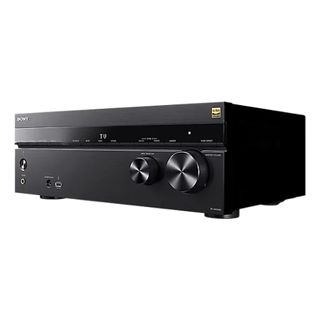 Best overall
Best overall
- Sony TA-AN1000£899 at Amazon£899 at Sevenoaks£999 at Peter TysonThe best AV receiver overall
If you’re looking for an amp that’ll elevate every single movie experience and improve all your music, look no further than the Sony TA-AN1000.
Read more below
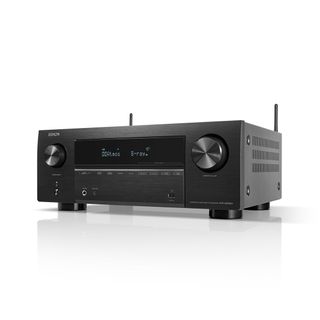 Best budget
Best budget
- Denon AVR-X2800H£529 at AV.com£599 at Amazon£869 at Peter TysonThe best budget AV receiver
Denon’s AVR-X2800H has one of the best feature sets of any AVR at this price point, with performance to match.
Read more below
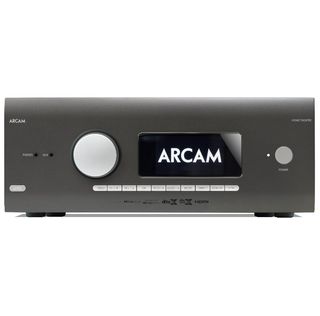 Best mid-range
Best mid-range
- Arcam AVR5£1,499 at AV.com£1,899 at Electricshop£1,999 at Peter TysonThe best mid-range AV receiver
The Arcam AVR5 is a great step up for those looking to get serious about home cinema sound without blowing the budget
Read more below
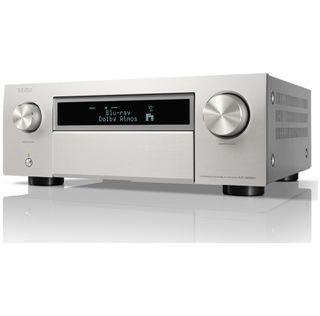 Best premium
Best premium
- Denon AVC-X6800H£2,649.97 at Electricshop£2,799 at Sevenoaks£2,999 at Peter TysonThe best premium AV receiver
The Denon AVC-X6800H is a worthy step up model for those who value sonic superiority and a no-compromise feature set.
Read more below
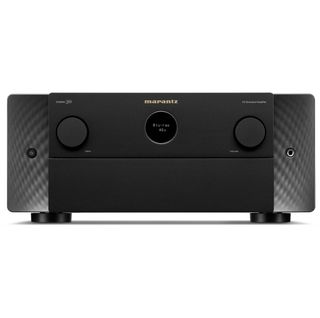 Best high-end
Best high-end
- Marantz Cinema 30 £3,999 at Peter Tyson£3,999 at Sevenoaks£3,999 at ElectricshopThe best high-end AV receiver
Marantz’s stylish AV amplifier is a feature-rich and excellent-sounding option for those with cash to spare.
Read more below
Recent updates11th September 2024: No new models this time, though we’ll soon find out if the new JBL MA series will be worthy of this list.
 Lewis EmpsonStaff writerI’m both a staff writer here at What Hi-Fi? and a home cinema enthusiast, so AVRs are a natural area of interest for me. I’ve tested a host of different models from different companies, with everything from super premium models with more features than I can count on both hands, as well as entry level models that cover the basics while still delivering cinematic sound. There are a number of factors to consider when purchasing an AVR, and you’ll want one that compliments your speaker system – primarily you’ll want to match the number of amplification channels with your system. Other factors to consider are wireless streaming credentials and HDMI 2.1 connectivity, which will be important to console gamers on the latest generation hardware.
Lewis EmpsonStaff writerI’m both a staff writer here at What Hi-Fi? and a home cinema enthusiast, so AVRs are a natural area of interest for me. I’ve tested a host of different models from different companies, with everything from super premium models with more features than I can count on both hands, as well as entry level models that cover the basics while still delivering cinematic sound. There are a number of factors to consider when purchasing an AVR, and you’ll want one that compliments your speaker system – primarily you’ll want to match the number of amplification channels with your system. Other factors to consider are wireless streaming credentials and HDMI 2.1 connectivity, which will be important to console gamers on the latest generation hardware.
- 22 of the best Dolby Atmos movie scenes to test your home cinema sound
- Want something smaller? See our pick of the best soundbars
Best overall AV receiver
Image 1 of 5 (Image credit: Sony)
(Image credit: Sony) (Image credit: Sony)
(Image credit: Sony) (Image credit: Sony)
(Image credit: Sony) (Image credit: What Hi-Fi?)
(Image credit: What Hi-Fi?) (Image credit: Sony)
(Image credit: Sony)
1. Sony TA-AN1000
Sony’s new home cinema amplifier is worth the waitOur expert review:
Average Amazon review:☆☆☆☆☆
Specifications
Channels: 7.1Audio formats: Dolby Atmos, DTS:X, IMAX Enhanced, Sony 360 Reality AudioConnectivity: 2 x HDMI out (1 x eARC), 6 x HDMI in, optical, USB, wi-fi, ethernet, BluetoothStreaming: AirPlay 2, Spotify, Chromecast Built In, Works with Sonos, BluetoothDimensions: 16 x 43 x 33 cm (13" x 17" x 8")Weight: 10kg (22lbs)Today’s Best Deals£899 at Amazon£899 at Sevenoaks£999 at Peter Tyson
Reasons to buy
+Spacious presentation+Precise and detailed sound+Impressive dynamics
Reasons to avoid
-Some rivals are better equipped-Set up is more involved than someChannels: 7.1Audio formats: Dolby Atmos, DTS:X, IMAX Enhanced, Sony 360 Reality AudioConnectivity: 2 x HDMI out (1 x eARC), 6 x HDMI in, optical, USB, wi-fi, ethernet, BluetoothStreaming: AirPlay 2, Spotify, Chromecast Built In, Works with Sonos, BluetoothDimensions: 16 x 43 x 33 cm (13" x 17" x 8")Weight: 10kg (22lbs)+Spacious presentation+Precise and detailed sound+Impressive dynamics-Some rivals are better equipped-Set up is more involved than someSony is finally back in the AV amp game with the TA-AN1000 home cinema amplifier. It’s been over five years since the Japanese tech giant graced us with its serial Award-winning STR-DN1080 AV receiver which took home Product of the Year in 2017 and 2018 (the year in which it also entered into our Hall of Fame), and it held a firm place on our Awards lists until 2020.
So surely a new AV amp from Sony is a cause for celebration? While this certainly is the case with the new TA-AN1000, we first find ourselves confronted with some awkward questions. Although it looks almost identical to the DN1080, why is it double the price?
Also, why does the US have an extensive AVR range consisting of five new models while the UK only gets this one model after we’ve waited so patiently for nearly six years? Finally, does the AN1000 live up to its lauded predecessor? While we can’t answer the first two questions, we can shed light on the third, and thankfully it’s good news.
Sony has caught lightning in a bottle once again, with the TA-AN1000 sparking the same magic as STR-DN1080 but at a higher price point. Its crisp, precise and punchy sound strikes a nearly perfect balance, and it elevates every movie and song we throw at it. This amplifier ticks all our boxes, with a sleek design, good feature set and outstanding performance, making it so easy to recommend. If you’re looking at buying an amp at this level, then the Sony TA-AN1000 is a no-brainer.
Read the full review: Sony TA-AN1000
Best budget AV receiver
Image 1 of 5 The Denon AVR-X2800H is an affordable amp with excellent connectivity.(Image credit: Denon)
The Denon AVR-X2800H is an affordable amp with excellent connectivity.(Image credit: Denon) (Image credit: Denon)
(Image credit: Denon) (Image credit: Denon)
(Image credit: Denon) (Image credit: Denon)
(Image credit: Denon) (Image credit: Denon)
(Image credit: Denon)
2. Denon AVR-X2800H
Denon’s entry-level model with new specs and a spacious new sound Our expert review:
Average Amazon review:☆☆☆☆☆
Specifications
Channels: 7.1Audio formats: Dolby Atmos, DTS:XVideo support: 8K/60Hz, 4K/120Hz, HDR (HDR10, HDR10+, Dolby Vision, HLG)Connectivity: 2 x HDMI out (1 x eARC), 6 x HDMI in, optical, USB, wi-fi, ethernet, BluetoothStreaming: AirPlay 2, HEOS, Spotify, Tidal, Deezer, Bluetooth, Roon TestedDimensions: 17 x 43 x 34 cm (9.3" x 13" x 17")Weight: 10kg (21lbs)Today’s Best Deals£529 at AV.com£599 at Amazon£869 at Peter Tyson
Reasons to buy
+Excellent connectivity+Authoritative but spacious sound+User-friendly full-screen interface
Reasons to avoid
-Appearance needs a refresh-Some might crave more bass weight-More expensive than previous modelChannels: 7.1Audio formats: Dolby Atmos, DTS:XVideo support: 8K/60Hz, 4K/120Hz, HDR (HDR10, HDR10+, Dolby Vision, HLG)Connectivity: 2 x HDMI out (1 x eARC), 6 x HDMI in, optical, USB, wi-fi, ethernet, BluetoothStreaming: AirPlay 2, HEOS, Spotify, Tidal, Deezer, Bluetooth, Roon TestedDimensions: 17 x 43 x 34 cm (9.3" x 13" x 17")Weight: 10kg (21lbs)+Excellent connectivity+Authoritative but spacious sound+User-friendly full-screen interface-Appearance needs a refresh-Some might crave more bass weight-More expensive than previous modelThe winner of the entry-level AVR price category in the 2022 What Hi-Fi? awards, the AVR-X2800H is one of the most affordable models in Denon’s premium X range, sporting seven channels of amplification and 7.1ch of processing. It can be configured to drive a 5.1.2 Dolby Atmos or DTS:X system. But those without vertical channels can take advantage of its onboard DTS Virtual:X and Dolby Atmos Height Virtualization technologies.
Despite being an entry-level amp, the HDMI board on the AVR-X2800H has been upgraded from its predecessor to include three HDMI 2.1 ports capable of 8K@60Hz or 4K@120Hz video pass-through at up to 40Gbps. The three remaining HDMI 2.0 ports have a bandwidth of 18Gbps, but all inputs boast 4:4:4 chroma sub-sampling and compatibility with various HDR codecs, including HDR10, HDR10+, Dolby Vision and Hybrid Log-Gamma (HLG).
Gamers are well looked after, with VRR, QFT, ALLM and FRL (Frame Rate Link) on board for a smoother playing experience. Elsewhere there’s also 8K upscaling offered on all inputs and eARC (Enhanced Audio Return Channel) to supply uncompressed audio via a single HDMI cable.
Released in 2022, the AVR-X2800H has had a sonic retune and offers users a more responsive, coherent and spacious sound than some of the brand’s older models. It retains Denon’s signature authoritative weight but refines and balances it with a bolder top end that can do better justice to both music and movies. Its onboard room calibration software and modernised full-screen interface make it relatively easy to use and well-equipped.
While the Denon AVR-X2800H is an excellent choice, especially at its more reasonable price point compared to other entries on this list, it’s worth pointing out that the performance gains offered by the Sony TA-AN1000 are worth forking out that little bit extra for if you can afford it.
Read the full review: Denon AVR-X2800H
Best mid-range AV receiver
Image 1 of 6 (Image credit: Future)
(Image credit: Future) (Image credit: Future)
(Image credit: Future) (Image credit: Future)
(Image credit: Future) (Image credit: Future)
(Image credit: Future) (Image credit: Future)
(Image credit: Future) (Image credit: Future)
(Image credit: Future)
3. Arcam AVR5
Arcam’s entry-level AVR prioritises sound over featuresOur expert review:
Specifications
HDMI inputs: 7HDMI outputs: 2 (including eARC)HDMI 2.1: noProcessing: 7.1.4 channelsAmplification: 7 channels @ 60 WattsPower: 86W (per channel) with two channels drivenHDR formats: HDR10, HLG, Dolby VisionAudio formats: Dolby Atmos, DTS:X, Dolby Digital, DD+, Dolby TrueHD, Dolby Surround, Dolby Virtual Height, DTS Neural:X, DTS Virtual:XConnectivity: Ethernet, Wi-Fi, Bluetooth, Airplay 2, ChromecastToday’s Best Deals£1,499 at AV.com£1,899 at Electricshop£1,999 at Peter Tyson
Reasons to buy
+Agile and rhythmic+Full, clear delivery+Dynamically authoritative
Reasons to avoid
-Lacks inbuilt calibration-HDMI 2.1 costs extra-Only seven channels of amplificationHDMI inputs: 7HDMI outputs: 2 (including eARC)HDMI 2.1: noProcessing: 7.1.4 channelsAmplification: 7 channels @ 60 WattsPower: 86W (per channel) with two channels drivenHDR formats: HDR10, HLG, Dolby VisionAudio formats: Dolby Atmos, DTS:X, Dolby Digital, DD+, Dolby TrueHD, Dolby Surround, Dolby Virtual Height, DTS Neural:X, DTS Virtual:XConnectivity: Ethernet, Wi-Fi, Bluetooth, Airplay 2, Chromecast+Agile and rhythmic+Full, clear delivery+Dynamically authoritative-Lacks inbuilt calibration-HDMI 2.1 costs extra-Only seven channels of amplificationArcam’s entry-level AVR takes the best mid-range spot on our list, and while that may sound like a contradictory statement, it makes perfect sense in the context of the wider market. It’s a step up in terms of price compared to the Sony and Denon offerings that proceed it on this list, but it’s also a step up where sound is concerned.
The AVR5 lacks a few features – namely HDMI 2.1 (sorry gamers) and a built-in calibration system – but it’s got the basics nailed down. The 7 HDMI inputs support 4K 60Hz passthrough signals with HDR10, Dolby Vision and HLG support on top (HDR10+ is unfortunately absent).
It features seven channels of amplification which supports up to a 5.1.2 or 7.1 system, although the AVR5 can natively decode up to 12 channels of Dolby Atmos audio. If your system is any larger you’ll need to pair this AVR with the Arcam PA410 power amplifier, which comes at an extra cost.
Those shortcomings can be overlooked though, as this Arcam excels when it comes to delivering a sensational movie and music sound performance. This makes the AVR5 an ideal step up for those who want a more nuanced and refined amplifier, or those who value authenticity when it comes to cinematic sound. Its agility and pinpoint accuracy make for an engaging performance which means the Arcam outperforms AVRs that well exceed it in the price department.
Read the full review: Arcam AVR5
Best premium AV receiver
Image 1 of 5 (Image credit: Denon)
(Image credit: Denon) (Image credit: Denon)
(Image credit: Denon) (Image credit: Future)
(Image credit: Future) (Image credit: Future)
(Image credit: Future) (Image credit: Future)
(Image credit: Future)
4. Denon AVC-X6800H
Denon delivers yet another feature-rich and powerful-sounding flagship AVROur expert review:
Specifications
HDMI inputs: x 7HDMI outputs: x 3ARC/eARC: eARCHDMI 2.1 features: 4K/120Hz, 8K/60Hz, VRR, ALLM, QMS on all rear HDMI inputsAmplification: 11 channelsHDR formats: HDR10, HDR10+, HLG, Dolby VisionAudio formats: Dolby Atmos, Dolby TrueHD, DTS:X, Neural:X, Auro-3DStreaming: HEOS, AirPlay 2, Spotify Connect, Amazon Music HD, Tidal, TuneIn, Roon Tested, BluetoothVoice assistant: Compatible with Alexa, Google Assistant, SiriToday’s Best Deals£2,649.97 at Electricshop£2,799 at Sevenoaks£2,999 at Peter Tyson
Reasons to buy
+Easy going and engaging sound, capable of huge scale+Fully featured+Intuitive set-up and operation
Reasons to avoid
-Some rivals offer a more direct presentationHDMI inputs: x 7HDMI outputs: x 3ARC/eARC: eARCHDMI 2.1 features: 4K/120Hz, 8K/60Hz, VRR, ALLM, QMS on all rear HDMI inputsAmplification: 11 channelsHDR formats: HDR10, HDR10+, HLG, Dolby VisionAudio formats: Dolby Atmos, Dolby TrueHD, DTS:X, Neural:X, Auro-3DStreaming: HEOS, AirPlay 2, Spotify Connect, Amazon Music HD, Tidal, TuneIn, Roon Tested, BluetoothVoice assistant: Compatible with Alexa, Google Assistant, Siri+Easy going and engaging sound, capable of huge scale+Fully featured+Intuitive set-up and operation-Some rivals offer a more direct presentationDenon has spent an uncharacteristically long time away from our AV testing room, as we’d become accustomed to new launches annually from the esteemed home cinema and hi-fi brand. Thankfully, it made a sensational comeback with the AVC-X6800H this year, which has earned it a second spot on this list.
Outshining an Award-winning AVR is no easy task, and yet Denon has improved upon the AVC-X6700H in every area that counts; that’s to say it’s an upgrade in both the features and sound department.
Starting with features, Denon has upgraded from one HDMI 2.1 socket on the previous model to a full suite of seven on this latest iteration. This comes with all the expected benefits – 4K/120Hz, VRR, ALLM – as well as lesser-seen features such as Quick Media Switching.
Alongside this is a comprehensive set of streaming features, including Denon’s own HEOS system, Spotify Connect and Amazon Music HD. Furthermore, Denon has introduced a new high definition on-screen user interface, which makes setting up and operating the Denon a dream.
The AVC-X6800H features 11 channels of amplification, with processing for up to 13. That means you can connect a full 7.1.4 Dolby Atmos surround sound system to this AV amplifier without the need for an external power amplifier. This makes it a convenient one box solution for clutter-conscious AV enthusiasts.
Onto the most important factor – sound quality – and the good news is that the Denon is equally talented. It delivers a rich, full-bodied sound with plenty of dynamic punch, while also remaining controlled and well-balanced. Surround effects also travel cohesively between the channels with a convincing spatial effect and no noticeable gaps, while the Dolby Atmos height channels provide a pleasing overhead audio experience.
While we could make a case for the Denon not producing the most natural or revealing sound – sometimes it rounds off effects in favour of warmth and richness, for example – it does inject a lot of fun into your home cinema viewing experience.
Read the full review: Denon AVC-X6800H
Best high-end AV receiver
Image 1 of 5 (Image credit: Marantz)
(Image credit: Marantz) (Image credit: What Hi-Fi?)
(Image credit: What Hi-Fi?) (Image credit: What Hi-Fi?)
(Image credit: What Hi-Fi?) (Image credit: What Hi-Fi?)
(Image credit: What Hi-Fi?) (Image credit: Masimo Consumer Australia)
(Image credit: Masimo Consumer Australia)
5. Marantz Cinema 30
Marantz delivers a premium AVR of rare abilityOur expert review:
Specifications
HDMI inputs: x 7HDMI outputs: x 3ARC/eARC: eARCHDMI 2.1 features: 4K/120Hz, 8K/60Hz, VRR, ALLM, QMS on all rear HDMI inputs and two outputsAmplification: 11 channelsPower: 140W per channelProcessing: 13 channelsHDR formats: HDR10, HDR10+, HLG, Dolby VisionAudio formats: Dolby Atmos, Dolby TrueHD, DTS:X, Neural:X, Auro-3DStreaming: HEOS, AirPlay 2, Spotify Connect, Amazon Music HD, Tidal, TuneIn, Roon Tested, BluetoothVoice assistant: Compatible with Alexa, Google Assistant, SiriToday’s Best Deals£3,999 at Peter Tyson£3,999 at Sevenoaks£3,999 at Electricshop
Reasons to buy
+Smooth, refined and always in control+Huge scale, punch and spatial precision+Plenty of HDMI 2.1 inputs and outputs
Reasons to avoid
-40Gbps HDMI limit might be a small issue in the futureHDMI inputs: x 7HDMI outputs: x 3ARC/eARC: eARCHDMI 2.1 features: 4K/120Hz, 8K/60Hz, VRR, ALLM, QMS on all rear HDMI inputs and two outputsAmplification: 11 channelsPower: 140W per channelProcessing: 13 channelsHDR formats: HDR10, HDR10+, HLG, Dolby VisionAudio formats: Dolby Atmos, Dolby TrueHD, DTS:X, Neural:X, Auro-3DStreaming: HEOS, AirPlay 2, Spotify Connect, Amazon Music HD, Tidal, TuneIn, Roon Tested, BluetoothVoice assistant: Compatible with Alexa, Google Assistant, Siri+Smooth, refined and always in control+Huge scale, punch and spatial precision+Plenty of HDMI 2.1 inputs and outputs-40Gbps HDMI limit might be a small issue in the futureMarantz hits a home cinema hat trick with the Cinema 30, earning full marks in the sound, build and feature departments. Much like its sister brand, Denon, it’s been a long time since we reviewed a Marantz home cinema receiver, so we were pleased to see a new model grace our home cinema testing room; it helps that it’s also an exceptional AVR.
Much like the above Denon, this AVR outshines a previous Award winner, with a shared agreement across the What Hi-Fi? AV team said that we would rather have the Cinema 30 than the AVR31.
Features-wise, the Cinema 30 has seven HDMI 2.1 inputs that support up to 8K/60Hz or 4K/120Hz signals with VRR, ALLM and QMS supported across the board. It’s worth noting that these ports aren’t the full 48Gbps bandwidth options, but slightly lower 40Gbps sockets, although that’s more of a future-proofing issue than anything. This AVR also supports HDR with both the Dolby Vision and HDR10+ dynamic formats included.
Wireless connectivity is also stellar, with Bluetooth, Apple AirPlay 2, Amazon Music HD, Spotify Connect, Tidal and Roon all supported. HEOS, Denon and Marantz’s in-house developed streaming platform, is also included, alongside an on-screen system that guides you through the setup of this amplifier.
The Cinema 30 supports 11 channels of amplification which can be configured in up to a 7.1.4 Dolby Atmos system without the need for an additional power amplifier. Marantz quotes 140W of power per channel, however, that figure relates to two channels driven; not the full 11.
Sound is, of course, the most important and the Marantz delivers here in droves. We commended its smooth, refined and controlled sound that packs a punch when required. It can deliver a seriously large-scale and spacious sound too, without sacrificing precision.
It’s pricey, but if you want a high-performing and feature-rich AV amplifier, then the Marantz Cinema 30 is easily one of the best on the market.
Read the full review: Marantz Cinema 30
Also consider
- Arcam AVR31:Our current Award-winning AVR has been knocked off its podium position by the Marantz, but that still makes it a great option for those looking for a high-end AVR. It produces a clean and balanced sound that is more authentic than the Marantz, but it is harder to set up and at times prioritises authenticity over engagement at times.
- JBL Syntheis SDR-38:This five-star AVR misses out for being considerably more expensive than both the Arcam AVR31 and Marantz Cinema 30. It delivers a wonderfully revealing and detailed sound and its upgraded selection of HDMI 2.1 sockets makes it a tempting choice if your budget allows it.
- Yamaha RX-A6A:This Yamaha brings spacious sound and rhythmic precision to your home cinema, alongside a bountiful feature set including seven HDMI 2.1 inputs. All of the expected HDMI 2.1 features are here too, meaning gamers should feel right at home.
- Pioneer VSA-LX805:The Pioneer VSA-LX805 is an excellent choice for those who want an AVR that can do it all in one convenient package. It has 11 channels of amplification, seven HDMI 2.1 sockets on the rear, and a simple setup procedure. It may lack some sonic subtlety, but it delivers some serious muscle to compensate.
How to choose the best AV receiver for you
AV receivers have many different monikers: AVR, surround sound amp, home theater receiver, Dolby Atmos receiver – but all these names refer to a multichannel amplifier that can decode surround sound information while also acting as a video and streaming hub for AV input sources and output devices.
The home cinema amplifier is essentially the brains and power of any home theater system, and a high-quality model will ensure that your TV shows and films sound emphatic, detailed and dynamic and genuinely give you that immersive experience.
The most crucial thing to consider when buying an AVR is matching it to the size of your surround system and deciding whether to allow for expansion in the future. Plenty of AV receivers now include Dolby Atmos and DTS:X support for adding even more sound channels through the addition of height channel speakers. Sometimes, these channels can also be deployed as a second zone.
The number of HDMI inputs you need is another important factor. Most AVRs come with several HDMI inputs that can pass through 4K (and even 8K) and HDR video. Still, it’s worth thinking about whether you’ll benefit from the next-gen gaming specs of HDMI 2.1 or if you’ll be using your home cinema primarily for film and TV, in which case, cheaper HDMI 2.0 ports will suffice.
With so much to consider, setting up an AVR yourself can be daunting, but many companies include a microphone and automatic calibration system that only involves a 15-minute, step-by-step process. Others go even further and can be enhanced by third-party calibration software for more in-depth tweaking. Whether you’re getting your AVR installed by a professional or going it alone, make sure that you’re comfortable with the interface’s user-friendliness.
Modern AVRs have become real home entertainment hubs and can bring a host of features such as Bluetooth, Apple AirPlay, multi-room streaming and DAB to your system, making it truly versatile and multi-functional. But most of all, the best AV receivers deliver brilliant, room-filling sound.
FAQs
How much should I spend on a home theater receiver?
The size of the speaker system you have (or hope to expand to) will typically dictate the price point of the AV receiver that you consider, as brands will tend to decrease the number of channels with each step-down model. More expensive AVRs will have more power and be able to drive more speakers for larger Dolby Atmos and DTS:X set-ups or speakers in additional zones.
There is no hard and fast rule as to how much you should spend on each component in your surround sound system, but you’ll be doing your speakers a disservice if they cost 20 times the amount of your amplifier and vice versa. Usually, we’ll put a few pairing suggestions in our reviews, so that’s as good a place as any to get a broad idea of what will work, but as a rough rule of thumb, you should budget to spend around half as much on your amplifier as the cost of your speaker package.
The size of the speaker system you have (or hope to expand to) will typically dictate the price point of the AV receiver that you consider, as brands will tend to decrease the number of channels with each step-down model. More expensive AVRs will have more power and be able to drive more speakers for larger Dolby Atmos and DTS:X set-ups or speakers in additional zones.
There is no hard and fast rule as to how much you should spend on each component in your surround sound system, but you’ll be doing your speakers a disservice if they cost 20 times the amount of your amplifier and vice versa. Usually, we’ll put a few pairing suggestions in our reviews, so that’s as good a place as any to get a broad idea of what will work, but as a rough rule of thumb, you should budget to spend around half as much on your amplifier as the cost of your speaker package.
How many channels do I need?
Is Dolby Atmos/DTS:X worth it?
Most entry-level AVRs from the past two years offer at least seven channels of amplification which means they can handle a traditional 7.1 configuration compromising full range left, centre, right, side left, side right, rear left and rear right speakers as well as a subwoofer (the .1 represents processing for dedicated active subwoofer). Or, if a receiver supports Dolby Atmos (which most do), those seven channels can be rearranged into a 5.1.2 layout with the rear speakers swapped to be front height channels.
More premium amps can handle power up to 11 channels for 7.1.4 layouts, but if that’s beyond the scope of your current set-up, remember that the number of channels an AVR can process, even with budget models, is usually greater than the number of amplified channels they provide. This means that if down the line you do want to add that extra pair of height speakers, you will have the option of adding a stereo amplifier to your existing system.
We’re big fans of Dolby Atmos and DTS:X, and if it’s within your budget, we’d certainly say it justifies the extra channels and speakers. However, if you’re limited to 5.1 by space or budget, that’s no bad thing, and there are some great options that can help you achieve a top-quality immersive system.
Is Dolby Atmos/DTS:X worth it?
Most entry-level AVRs from the past two years offer at least seven channels of amplification which means they can handle a traditional 7.1 configuration compromising full range left, centre, right, side left, side right, rear left and rear right speakers as well as a subwoofer (the .1 represents processing for dedicated active subwoofer). Or, if a receiver supports Dolby Atmos (which most do), those seven channels can be rearranged into a 5.1.2 layout with the rear speakers swapped to be front height channels.
More premium amps can handle power up to 11 channels for 7.1.4 layouts, but if that’s beyond the scope of your current set-up, remember that the number of channels an AVR can process, even with budget models, is usually greater than the number of amplified channels they provide. This means that if down the line you do want to add that extra pair of height speakers, you will have the option of adding a stereo amplifier to your existing system.
We’re big fans of Dolby Atmos and DTS:X, and if it’s within your budget, we’d certainly say it justifies the extra channels and speakers. However, if you’re limited to 5.1 by space or budget, that’s no bad thing, and there are some great options that can help you achieve a top-quality immersive system.
Is it worth paying more for HDMI 2.1?
Typically, home theater receivers sport at least seven HDMI inputs, which should cover the majority of a user’s streaming sticks, consoles and Blu-ray players. If not though, more expensive models will sometimes offer one or two more, and if you’d like to hook up both a TV and a projector, make sure that there are at least two HDMI outputs.
HDMI 2.1 is the latest standard for HDMI connectivity, with a bandwidth of up to 48Gbps. It supports gaming features that PCs, PS5 and Xbox Series X consoles can take advantage of, such as 4K@120Hz gameplay, VRR (Variable Refresh Rate) , ALLM (Auto Low Latency Mode) QFT (Quick Frame Transport) and QMS (Quick Media Switching).
While most home cinema receivers from the past two years will have at least one HDMI 2.1 output with eARC, some entry-level models only offer HDMI 2.0 input ports. But, unless you are a gamer, for most people, HDMI 2.0 will meet all their film-watching needs as it supports 4K signals at up to 60 frames per second, which no movie source currently goes beyond.
Is it worth paying more for HDMI 2.1?
Typically, home theater receivers sport at least seven HDMI inputs, which should cover the majority of a user’s streaming sticks, consoles and Blu-ray players. If not though, more expensive models will sometimes offer one or two more, and if you’d like to hook up both a TV and a projector, make sure that there are at least two HDMI outputs.
HDMI 2.1 is the latest standard for HDMI connectivity, with a bandwidth of up to 48Gbps. It supports gaming features that PCs, PS5 and Xbox Series X consoles can take advantage of, such as 4K@120Hz gameplay, VRR (Variable Refresh Rate) , ALLM (Auto Low Latency Mode) QFT (Quick Frame Transport) and QMS (Quick Media Switching).
While most home cinema receivers from the past two years will have at least one HDMI 2.1 output with eARC, some entry-level models only offer HDMI 2.0 input ports. But, unless you are a gamer, for most people, HDMI 2.0 will meet all their film-watching needs as it supports 4K signals at up to 60 frames per second, which no movie source currently goes beyond.
How many Watts per channel do I need?
Manufacturers will recommend an amplifier power rating range in a speaker’s specifications, and as with impedance, it’s a good idea to check that this lines up with the average, or RMS power output, of an AVR. Sometimes this figure will only be given in relation to when only 2 channels are driven as its a higher (and more impressive) number, but the key here is to make sure that they are comparable, else your speakers may be underpowered and struggle to provide sufficient, impactful volume, or overdriven which may cause distortion and damage to speakers at high levels.
Manufacturers will recommend an amplifier power rating range in a speaker’s specifications, and as with impedance, it’s a good idea to check that this lines up with the average, or RMS power output, of an AVR. Sometimes this figure will only be given in relation to when only 2 channels are driven as its a higher (and more impressive) number, but the key here is to make sure that they are comparable, else your speakers may be underpowered and struggle to provide sufficient, impactful volume, or overdriven which may cause distortion and damage to speakers at high levels.
Do I need to impendence match my speakers to an AVR?
It’s unlikely that you’ll come across a AVR that won’t be up to the task of driving a domestic speaker system or that will cause damage through incompatibility but it’s still a good idea to check the specifications to try and get a good match.
Most home cinema speakers will have an average impedance of 4 -8 Ohms which will be listed by the manufacturer in its specifications under ’nominal impendence’. This figure should ideally sit within the impendence range that an amplifier supports, because if a speaker has a particularly low impedance that an AVR is not designed to handle, it could potentially overload the power supply and cause damage.
It’s unlikely that you’ll come across a AVR that won’t be up to the task of driving a domestic speaker system or that will cause damage through incompatibility but it’s still a good idea to check the specifications to try and get a good match.
Most home cinema speakers will have an average impedance of 4 -8 Ohms which will be listed by the manufacturer in its specifications under ’nominal impendence’. This figure should ideally sit within the impendence range that an amplifier supports, because if a speaker has a particularly low impedance that an AVR is not designed to handle, it could potentially overload the power supply and cause damage.
Do I need room calibration software?
Some brands, such as Yamaha and Denon, include a step-by-step room calibration set-up and microphone with all their AVRs that will measure the response of your speakers with your room and apply an appropriate EQ that flattens any anomalies.
Other brands, such as JBL and Arcam, offer third-party software Dirac with premium models, or as an optional upgrade for budget models.
If you purchase an AVR from a dealer that offers installation, calibration will likely be included. However, if you’re someone who likes fine-tuning or you’re likely to make changes to your set-up, it’s important to bear in mind that you won’t be able to make further adjustments.
However, optimization software is by no means essential, and you can still calibrate a system manually using a Sound Pressure Level (SPL) meter (there are now decent SPL apps that work fine if you’ve also got a good phone with a decent microphone, though a dedicated meter is still the way to go if possible) and a tape measure. Even budget AVRs include an internal test tone and options to assign speaker distances and levels. Those installing a home cinema in an unusually shaped space will benefit more from calibration software, but for typical usage, it’s not vital.
For more advice, check out our guide on how to set up your home cinema speaker system.
Some brands, such as Yamaha and Denon, include a step-by-step room calibration set-up and microphone with all their AVRs that will measure the response of your speakers with your room and apply an appropriate EQ that flattens any anomalies.
Other brands, such as JBL and Arcam, offer third-party software Dirac with premium models, or as an optional upgrade for budget models.
If you purchase an AVR from a dealer that offers installation, calibration will likely be included. However, if you’re someone who likes fine-tuning or you’re likely to make changes to your set-up, it’s important to bear in mind that you won’t be able to make further adjustments.
However, optimization software is by no means essential, and you can still calibrate a system manually using a Sound Pressure Level (SPL) meter (there are now decent SPL apps that work fine if you’ve also got a good phone with a decent microphone, though a dedicated meter is still the way to go if possible) and a tape measure. Even budget AVRs include an internal test tone and options to assign speaker distances and levels. Those installing a home cinema in an unusually shaped space will benefit more from calibration software, but for typical usage, it’s not vital.
For more advice, check out our guide on how to set up your home cinema speaker system.
What is the HDMI 2.1 bug and which AVRs are affected?
In 2020 several newly released gaming-friendly AV receivers were hit by a significant HDMI 2.1 bug that caused a black screen for users with next-gen consoles trying to play 4K games at 120Hz via an Xbox series X and Nvidia card. This problem may have only been an issue for a select group of users, but it was a significant blow for those who had eagerly purchased one of the latest and greatest AVRs for gaming set-up.
The glitch affects 2020-launched AV receivers from Denon, Marantz and Yamaha. We’ve listed the models below, but they all have one thing in common: the same HDMI 2.1 chip.
The impacted AV receivers include: Marantz’s SR range (SR5015, SR6015, SR7015 and SR8015), Denon’s X-series range (AVR-X2700H, AVC-X3700H, AVC-X4700H, AVC-X6700H) and Yamaha’s RX-V4A, RX-V6A, RX-A2A, TSR-400 and TSR-700.
Sound United, the parent company for Denon and Marantz, “worked tirelessly” to address this long-running HDMI issue. Since it was identified, all Denon and Marantz flagship receivers manufactured after May 2021 are officially glitch-free. This is because the latest units are fitted with a new HDMI 2.1 chip that doesn’t suffer the same flaws.
But how do you ensure you get one of the newer, glitch-free home cinema amplifiers? Denon has tweaked the serial number of the new models: numbers that end with serial numbers from 70001 onwards should be bug-free, as they will have been manufactured after May 2021 and boast the upgraded HDMI 2.1 chip.
If you have bought or are considering buying one of the earlier affected models, it’s not all doom and gloom. You can get hold of Sound United’s external HDMI adaptor, which contains the new chip and corrects the bug. Simply fill out the form on the Denon or Marantz website to get one for free.
Meanwhile, Yamaha’s more recent flagship AVRs (RX-A4A, RX-A6A and RX-A8A) are unaffected by the HDMI 2.1 glitch and have received a number of firmware upgrades to enable additional HDMI 2.1 features.
Regarding its older, affected models, Yamaha began a hardware upgrade programme, beginning in Autumn 2021, to update the HDMI board on select 2020 AV receivers to allow 4K/120Hz signal transmission for Xbox Series X and NVIDIA RTX30 GPU-based devices.
Yamaha advises owners of the RX-V4A, RX-V6A, RX-A2A, TSR-400 and TSR-700 AV receivers to register their devices with Yamaha to ensure that they receive direct communications on the programme and a 24-month complimentary upgrade offer.
At the time of the upgrade programme launch, Yamaha stressed that the update should only be used by those who are intending on using their AVR with high frame rate streams for gaming through the Xbox and Nvidia cards as the amps can still pass through 4K/60Hz signals with compatible HDR formats such as HDR10 and Dolby Vision, meaning that they are more than capable of handling film and TV formats.
In 2020 several newly released gaming-friendly AV receivers were hit by a significant HDMI 2.1 bug that caused a black screen for users with next-gen consoles trying to play 4K games at 120Hz via an Xbox series X and Nvidia card. This problem may have only been an issue for a select group of users, but it was a significant blow for those who had eagerly purchased one of the latest and greatest AVRs for gaming set-up.
The glitch affects 2020-launched AV receivers from Denon, Marantz and Yamaha. We’ve listed the models below, but they all have one thing in common: the same HDMI 2.1 chip.
The impacted AV receivers include: Marantz’s SR range (SR5015, SR6015, SR7015 and SR8015), Denon’s X-series range (AVR-X2700H, AVC-X3700H, AVC-X4700H, AVC-X6700H) and Yamaha’s RX-V4A, RX-V6A, RX-A2A, TSR-400 and TSR-700.
Sound United, the parent company for Denon and Marantz, “worked tirelessly” to address this long-running HDMI issue. Since it was identified, all Denon and Marantz flagship receivers manufactured after May 2021 are officially glitch-free. This is because the latest units are fitted with a new HDMI 2.1 chip that doesn’t suffer the same flaws.
But how do you ensure you get one of the newer, glitch-free home cinema amplifiers? Denon has tweaked the serial number of the new models: numbers that end with serial numbers from 70001 onwards should be bug-free, as they will have been manufactured after May 2021 and boast the upgraded HDMI 2.1 chip.
If you have bought or are considering buying one of the earlier affected models, it’s not all doom and gloom. You can get hold of Sound United’s external HDMI adaptor, which contains the new chip and corrects the bug. Simply fill out the form on the Denon or Marantz website to get one for free.
Meanwhile, Yamaha’s more recent flagship AVRs (RX-A4A, RX-A6A and RX-A8A) are unaffected by the HDMI 2.1 glitch and have received a number of firmware upgrades to enable additional HDMI 2.1 features.
Regarding its older, affected models, Yamaha began a hardware upgrade programme, beginning in Autumn 2021, to update the HDMI board on select 2020 AV receivers to allow 4K/120Hz signal transmission for Xbox Series X and NVIDIA RTX30 GPU-based devices.
Yamaha advises owners of the RX-V4A, RX-V6A, RX-A2A, TSR-400 and TSR-700 AV receivers to register their devices with Yamaha to ensure that they receive direct communications on the programme and a 24-month complimentary upgrade offer.
At the time of the upgrade programme launch, Yamaha stressed that the update should only be used by those who are intending on using their AVR with high frame rate streams for gaming through the Xbox and Nvidia cards as the amps can still pass through 4K/60Hz signals with compatible HDR formats such as HDR10 and Dolby Vision, meaning that they are more than capable of handling film and TV formats.
How we test AV receivers
We have state-of-the-art testing facilities in London, Reading and Bath, where our team of experienced, in-house reviewers test the majority of hi-fi and AV kit that passes through our door.
Each AVR we test is paired with a reference level speaker package and is directly compared to the best in its price and features class – whether that’s the current What Hi-Fi? award winner or a few of the latest models we’ve been impressed by in recent reviews. What Hi-Fi? is all about comparative testing, and we keep class-leading products in our stockrooms so we can easily compare new products to ones we know and love.
We are always impartial and do our best to make sure we’re hearing every product at its very best, so we’ll try plenty of different styles of films, and TV shows that show what each AVR is capable of with both advanced and standard audio formats. We’ll check all the features on board, including music playback with a variety of genres and allow for plenty of listening time as well as running them in before we begin reviewing.
All review verdicts are agreed upon by the team rather than an individual reviewer to eliminate any personal preference and to make sure we’re being as thorough as possible, too. There’s no input from PR companies or our sales team when it comes to the verdict with What Hi-Fi? proud of having delivered honest, unbiased reviews for decades.
Recent updates
-
April 2024: The Denon AVC-X6800H makes the cut thanks to its stellar feature set and rich, powerful sound. For the money, we think it’s a great middle ground option between the Arcam AVR5 and AVR31.
-
The best speaker packages to pair with your new AV amplifier
-
How to set up your AV receiver and get the best sound
-
Home cinema and AV deals round-up
Round up of today’s best deals Sony TA-AN1000
Sony TA-AN1000 £999£899ViewSee all prices
£999£899ViewSee all prices Denon AVR-X2800H
Denon AVR-X2800H £649£599ViewSee all pricesLow Stock
£649£599ViewSee all pricesLow Stock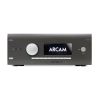 Arcam AVR5
Arcam AVR5 £1,999ViewSee all pricesLow Stock
£1,999ViewSee all pricesLow Stock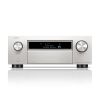 Denon AVC-X6800H
Denon AVC-X6800H £2,999ViewSee all pricesLow Stock
£2,999ViewSee all pricesLow Stock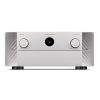 Marantz Cinema 30
Marantz Cinema 30 £3,999ViewSee all pricesWe check over 250 million products every day for the best pricespowered by
£3,999ViewSee all pricesWe check over 250 million products every day for the best pricespowered by 
 Join the conversation with other Anthem fans on Facebook.
Join the conversation with other Anthem fans on Facebook. Keep up with everything Anthem on Twitter.
Keep up with everything Anthem on Twitter. View & download product photos, lifestyle images and logos on Flickr.
View & download product photos, lifestyle images and logos on Flickr. Watch our information and product videos on YouTube.
Watch our information and product videos on YouTube. Get the latest news and special announcements on our official Blog.
Get the latest news and special announcements on our official Blog.












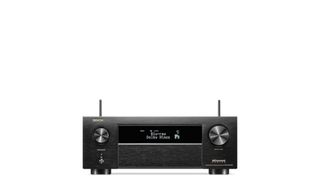 Best overall
Best overall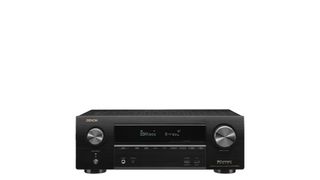 Best value
Best value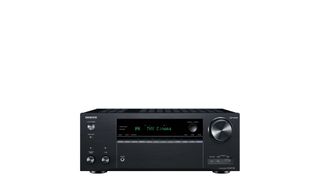 Best 4K/8K support
Best 4K/8K support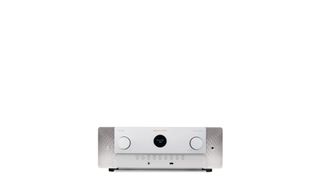 Best format support
Best format support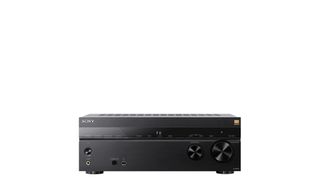 Best for spatial audio
Best for spatial audio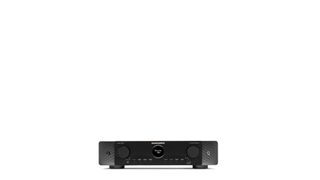 Best low profile
Best low profile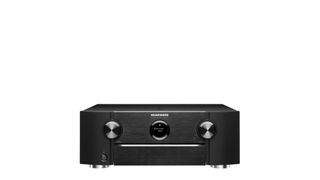 Best for audiophiles
Best for audiophiles Lee DunkleyAudio EditorHi, I’m Lee and I cover all things audio for Tom’s Guide, including maintaining buying guides on the best AV receivers, best audiophile headphones, best turntables, and best music streaming services (to name a few). I’ve been working in the consumer tech industry for more than 30 years and write about the finest audio products in the world. As an audio expert, I built my own home theater room to test AV setups including multi-channel AV receivers, speaker systems, and flatscreen TVs. As well as being fanatical about great sound with high-octane movies, I also love listening to music on components that get me closer to my favorite tracks and make a strong musical connection. I have been reviewing luxury Hi-Fi audio components since the mid-nineties, making me perfectly positioned to find the best-sounding AV receiver for all your home entertainment needs at the right budget.
Lee DunkleyAudio EditorHi, I’m Lee and I cover all things audio for Tom’s Guide, including maintaining buying guides on the best AV receivers, best audiophile headphones, best turntables, and best music streaming services (to name a few). I’ve been working in the consumer tech industry for more than 30 years and write about the finest audio products in the world. As an audio expert, I built my own home theater room to test AV setups including multi-channel AV receivers, speaker systems, and flatscreen TVs. As well as being fanatical about great sound with high-octane movies, I also love listening to music on components that get me closer to my favorite tracks and make a strong musical connection. I have been reviewing luxury Hi-Fi audio components since the mid-nineties, making me perfectly positioned to find the best-sounding AV receiver for all your home entertainment needs at the right budget.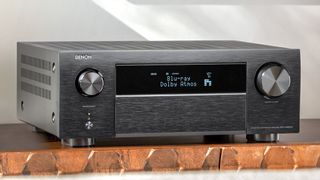

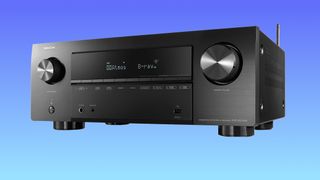

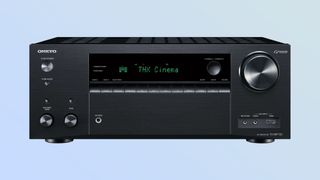
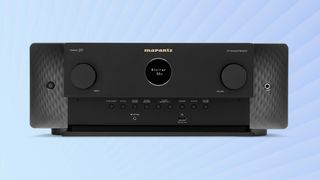

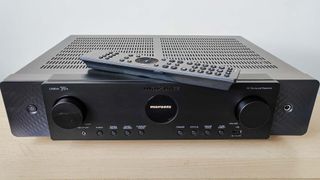
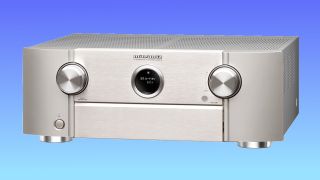
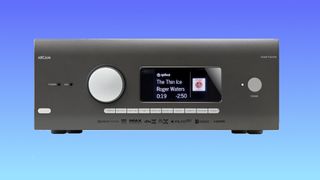

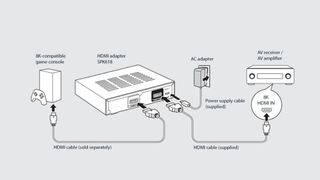
 Denon AVR-4800H
Denon AVR-4800H $2,499ViewSee all prices
$2,499ViewSee all prices Denon AVR-X2700H
Denon AVR-X2700H Onkyo TX-NR7100
Onkyo TX-NR7100 Marantz Cinema 50
Marantz Cinema 50 $898ViewSee all prices
$898ViewSee all prices Marantz Cinema 70S
Marantz Cinema 70S

 Best overall
Best overall Best budget
Best budget Best mid-range
Best mid-range Best premium
Best premium Best high-end
Best high-end Sony TA-AN1000
Sony TA-AN1000 £999£899ViewSee all prices
£999£899ViewSee all prices Denon AVR-X2800H
Denon AVR-X2800H Arcam AVR5
Arcam AVR5 £1,999ViewSee all pricesLow Stock
£1,999ViewSee all pricesLow Stock Denon AVC-X6800H
Denon AVC-X6800H Marantz Cinema 30
Marantz Cinema 30
